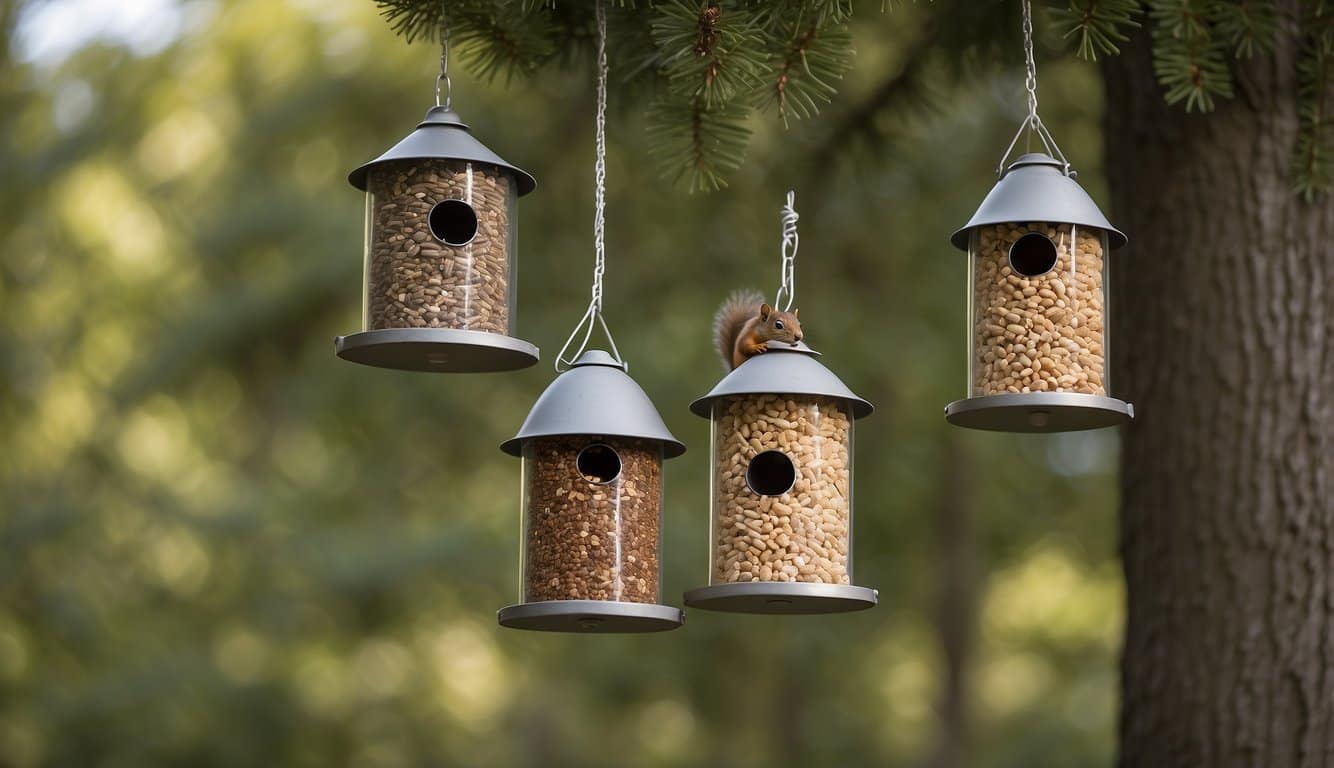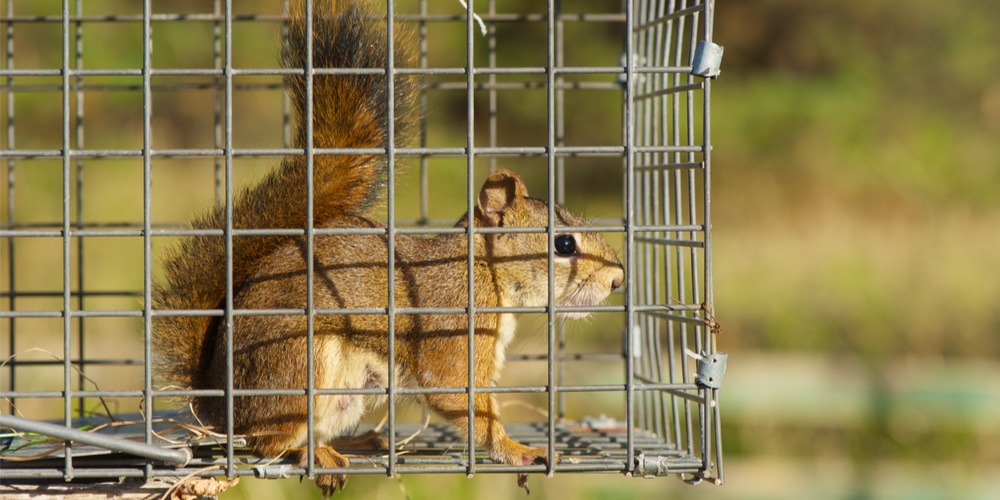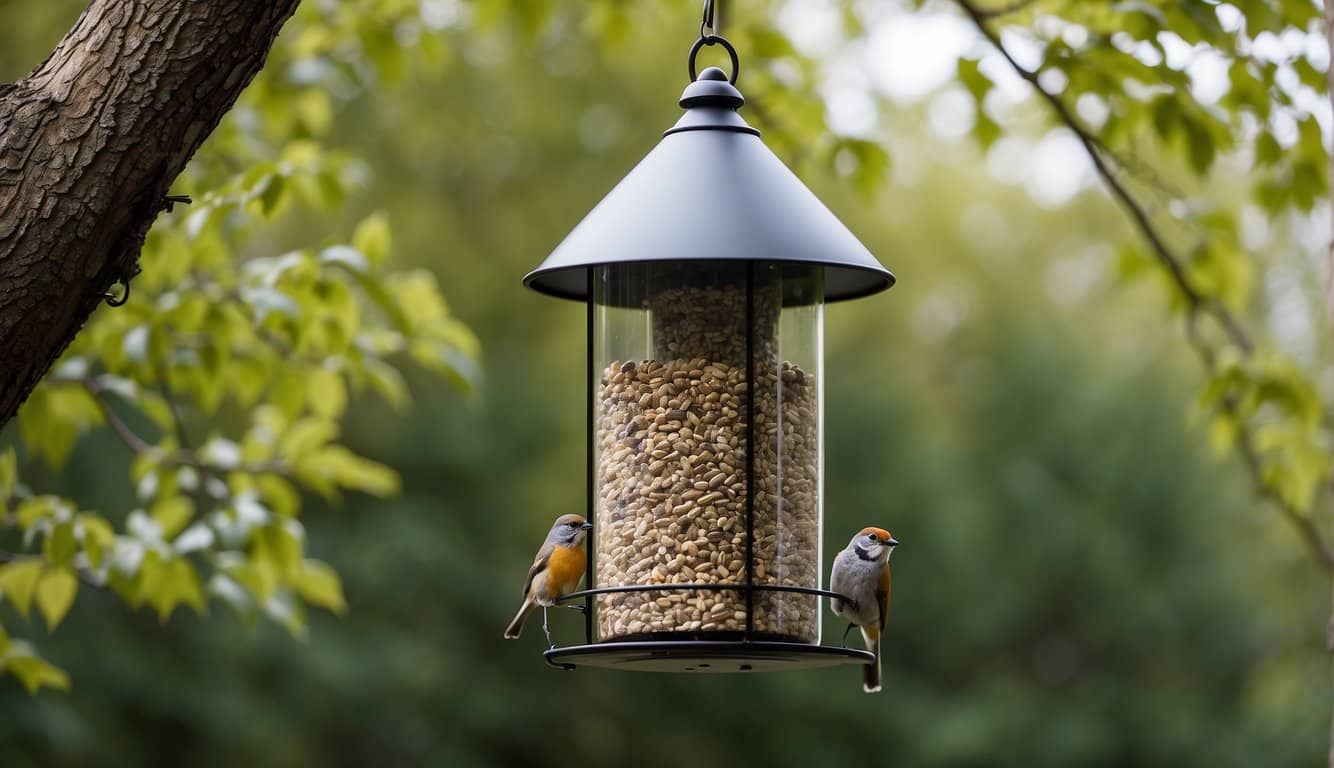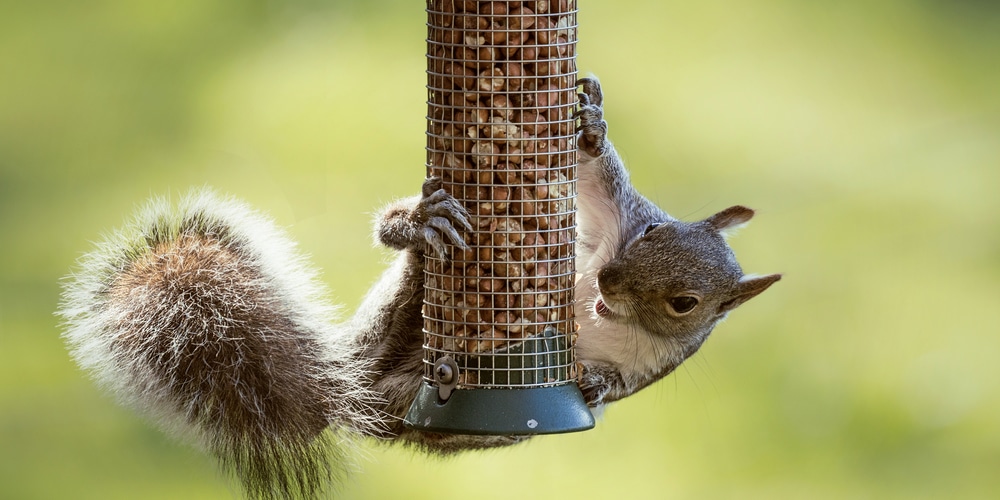Bird feeders are a wonderful way to invite a symphony of bird songs into one’s backyard, offering a close-up view of local avian wildlife.
However, these feeders often attract more than their intended guests. Squirrels, with their acrobatic feats and insatiable appetites, can raid bird feeders, often depleting the seeds meant for birds and damaging the feeders.
Squirrel-proof bird feeders have become a popular solution for bird enthusiasts who wish to deter these persistent creatures.
Squirrel-proof bird feeders are engineered with various mechanisms to prevent squirrels from accessing the seeds.
Manufacturers have devised ingenious designs such as weight-sensitive perches that collapse under the weight of a squirrel, spinning mechanisms that gently fling the creatures off, and cages that allow only birds to reach the feeding ports.
These features not only conserve birdseed for feathered friends but also prevent feeder damage.
Additionally, material strength and durability are critical, as a squirrel-proof bird feeder must withstand the clever antics of squirrels attempting to chew through or dismantle it.
Squirrel-proof bird feeders are a garden enthusiast’s solution to the common problem of squirrels depleting birdseed intended for feathered friends. They employ various mechanisms to deter squirrels, ensuring that bird feed remains for its intended recipients.
Weight-Sensitive Design:
These feeders have a built-in system that closes the feeding ports when a heavier weight, indicative of a squirrel’s presence, is detected on the feeder. This allows birds to feed while preventing squirrels from accessing the seed.
Material Durability:
Many squirrel-proof bird feeders are made with chew-proof materials such as metal, thwarting squirrels from gnawing their way in. Durability extends the life of the feeder and keeps the seed secure.
- Seed Ventilation:
A good bird feeder includes a ventilation system to keep seeds dry and fresh, reducing waste and preventing mold growth which could be harmful to birds.
- Feeder Placement:
Proper placement of bird feeders can significantly improve their effectiveness in remaining squirrel-proof. Strategic positioning away from jump-off points like trees or buildings, as well as the addition of baffles and other barriers, can enhance the squirrel-proof nature of a feeder.
Selecting a squirrel-proof bird feeder often involves considering several innovative design features. These features are specifically crafted to prevent squirrels from accessing the birdseed, thereby preserving the food for birds.
Weight-Activated Mechanisms
Many squirrel-proof bird feeders incorporate weight-activated mechanisms that close access to the seed ports when a squirrel lands on them.
These systems usually have adjustable weight settings, so they can be calibrated to deter squirrels while still allowing birds to feed. For example, the Droll Yankees Yankee Flipper feeder uses such a mechanism to effectively keep squirrels away from the birdseed.
Cage Barriers
Cage barriers are another common design element that involves an outer cage surrounding the feeder.
Only birds small enough to pass through the cage openings can access the seed. These caged feeders often protect against larger bully birds as well as squirrels. They function particularly well for small bird species like finches or chickadees.
Spinners and Motorized Perches
Spinners and motorized perches add a dynamic element to squirrel-proof bird feeders.
When a squirrel tries to feed, the motorized system triggers, spinning the perch. This harmless action dislodges the squirrel due to their heavier weight, without harming them, while birds can still perch and feed undisturbed. The Yankee Flipper is a notable example that utilizes this spinning mechanism to provide entertainment as well as protection for the birdseed.
When selecting a squirrel-proof bird feeder, the material and its durability are crucial for long-term effectiveness and resistance to squirrel damage.
Chew-Proof Materials
Materials such as metal or heavy-duty resin are commonly used in the construction of squirrel-proof bird feeders due to their resistance to gnawing by squirrels.
Metal feeders, like the Brome SquirrelSolution 200, offer robust protection as squirrels cannot easily chew through them. It is important to look for feeders that specify they are made with chew-proof materials to ensure squirrels cannot compromise the feeder to access the seeds.
Weather Resistance
A bird feeder’s ability to withstand various weather conditions is equally important. Elements to consider include:
- UV resistance: The feeder should not fade or crack when exposed to sunlight.
- Rust resistance: If the feeder is metal, it should have a coating to prevent rust.
- Freeze-thaw durability: The material should not degrade with repeated cycles of freezing and thawing.
Ease of Cleaning and Maintenance
A squirrel-proof bird feeder should also be straightforward to clean and maintain, as proper hygiene is critical to prevent the spread of diseases among the bird population. Features that contribute to convenience include:
- Removable parts: For thorough cleaning without difficulty.
- Dishwasher-safe components: Save time and ensure cleanliness.
- A design that allows easy access to interior surfaces for manual scrubbing.
To maximize the effectiveness of a squirrel-proof bird feeder, careful attention must be given to its placement and method of installation. These can be the make-or-break factors in the ongoing battle between birds and squirrels.
Strategic Positioning
An optimal location for a bird feeder is in a clear area away from easy access points for squirrels. It’s crucial not to underestimate the jumping capabilities of these agile creatures.
- Open Space: Feeders should be located in an area that is devoid of any overhanging limbs or close structures that squirrels can use to leap from.
Installation Height
The height at which a bird feeder is installed can be a deterrent by itself.
- Optimal Height: A feeder must be at least 5 feet off the ground, which is normally beyond the jumping range of squirrels from the ground.
Distance From Squirrel Launch Points
Squirrels are excellent jumpers and can leap considerable distances to land on a bird feeder.
- Minimum Distances:
- Vertical Distance: Bird feeders should be hung a minimum of 5 feet above ground.
- Horizontal Distance: Install feeders at least 10 feet away from launch points such as trees or buildings.
Frequently Asked Questions
In the quest to enjoy avian visitors without interference from squirrels, many bird enthusiasts seek effective squirrel-proof bird feeders. This FAQ section addresses common concerns and curiosities surrounding the squirrel deterring tactics and products.
What materials are most effective for DIY squirrel-proof bird feeders?
For DIY squirrel-proof bird feeders, materials such as heavy-duty metal or thick, chew-resistant plastic are most effective. They often work well alongside deterrents like slippery surfaces or metal baffles that impede squirrels’ grip and access.
Which brands offer the best squirrel-proof bird feeders on the market?
Brands like Brome and Droll Yankees are frequently praised for their effectiveness in creating squirrel-proof bird feeders. They often feature weight-sensitive perches that close the feeding ports under a squirrel’s weight.
How can I install a bird feeder pole to deter squirrels?
To deter squirrels, install bird feeder poles at least 18 inches from the ground and over 10 feet away from launching points such as trees or decks. Using smooth poles or installing baffles can further prevent squirrels from climbing.
What are the reviews for squirrel-proof bird feeders available on Amazon?
Reviews for squirrel-proof bird feeders on Amazon generally highlight their sturdiness and effectiveness. Customers often share experiences about various feeder designs thwarting persistent squirrels, with certain models receiving higher praise for their durability and clever mechanisms.
How does a spinning mechanism in bird feeders prevent squirrels from feeding?
A spinning mechanism in bird feeders is designed to rotate under the weight and movements of squirrels, causing them to lose their balance and fall off without harming them, thus preventing access to the bird food.
What techniques can be employed to keep squirrels away from bird feeders?
Techniques include installing baffles to block physical access. You can also use thin wires to hang feeders where squirrels can’t hold onto. Additionally, changing the feeder’s location regularly and trimming tree branches around feeding areas to remove leap points for the agile rodents.
Last update on 2025-04-19 / Affiliate links / Images from Amazon Product Advertising API





